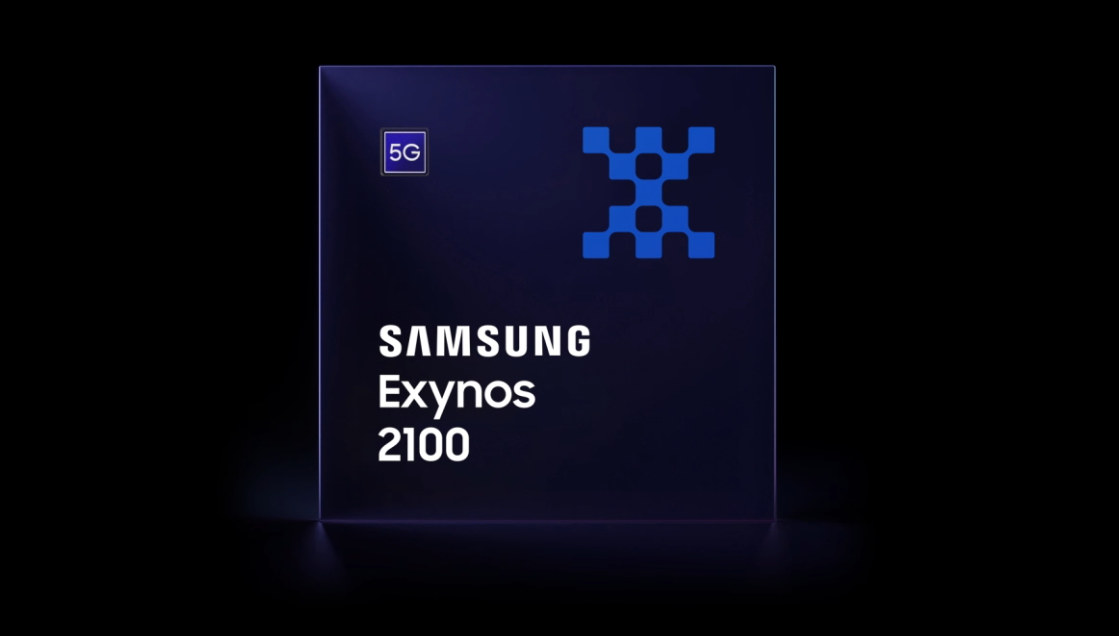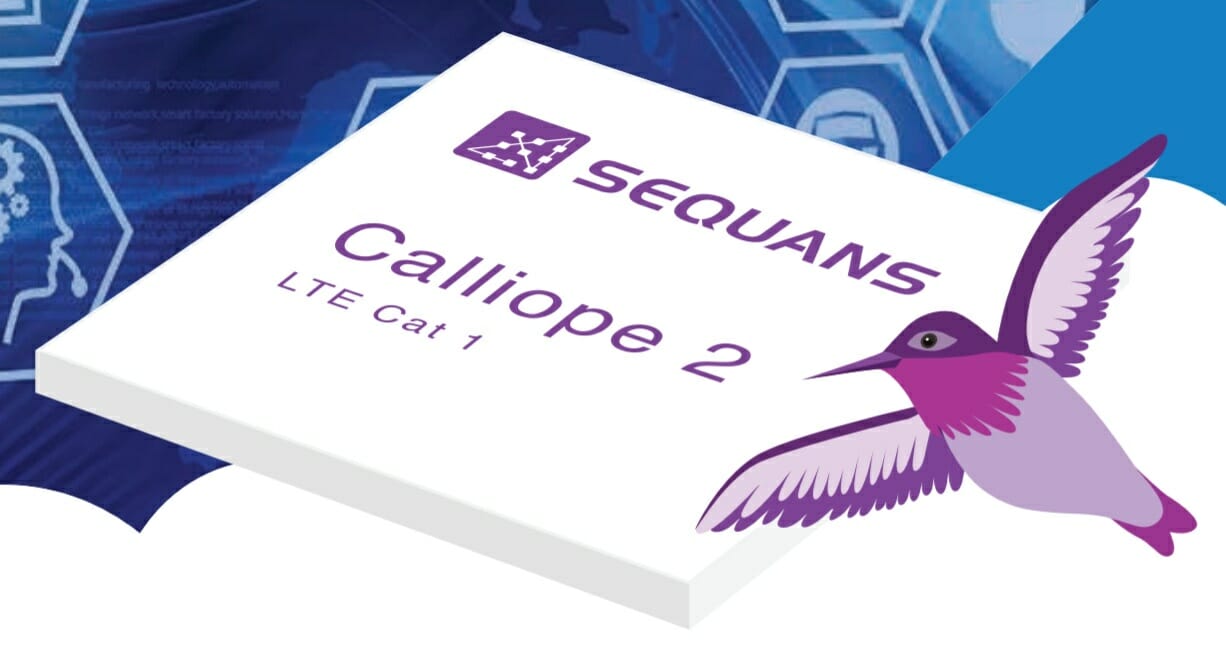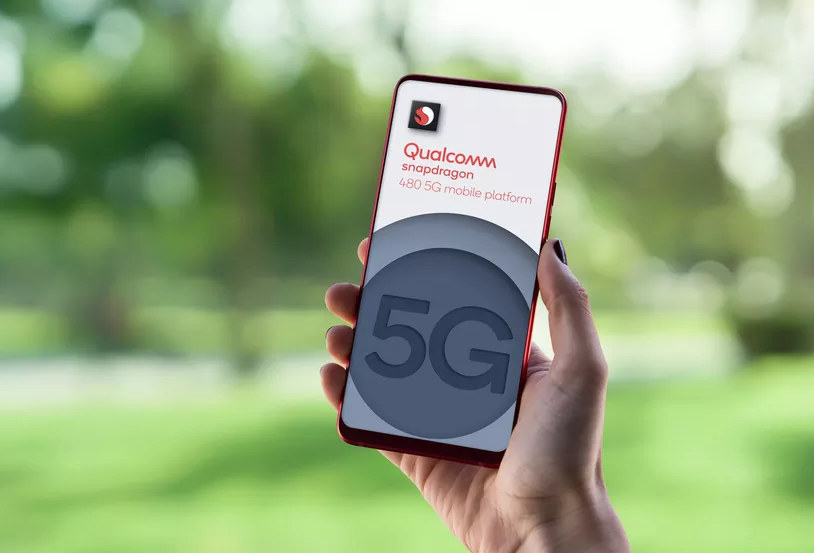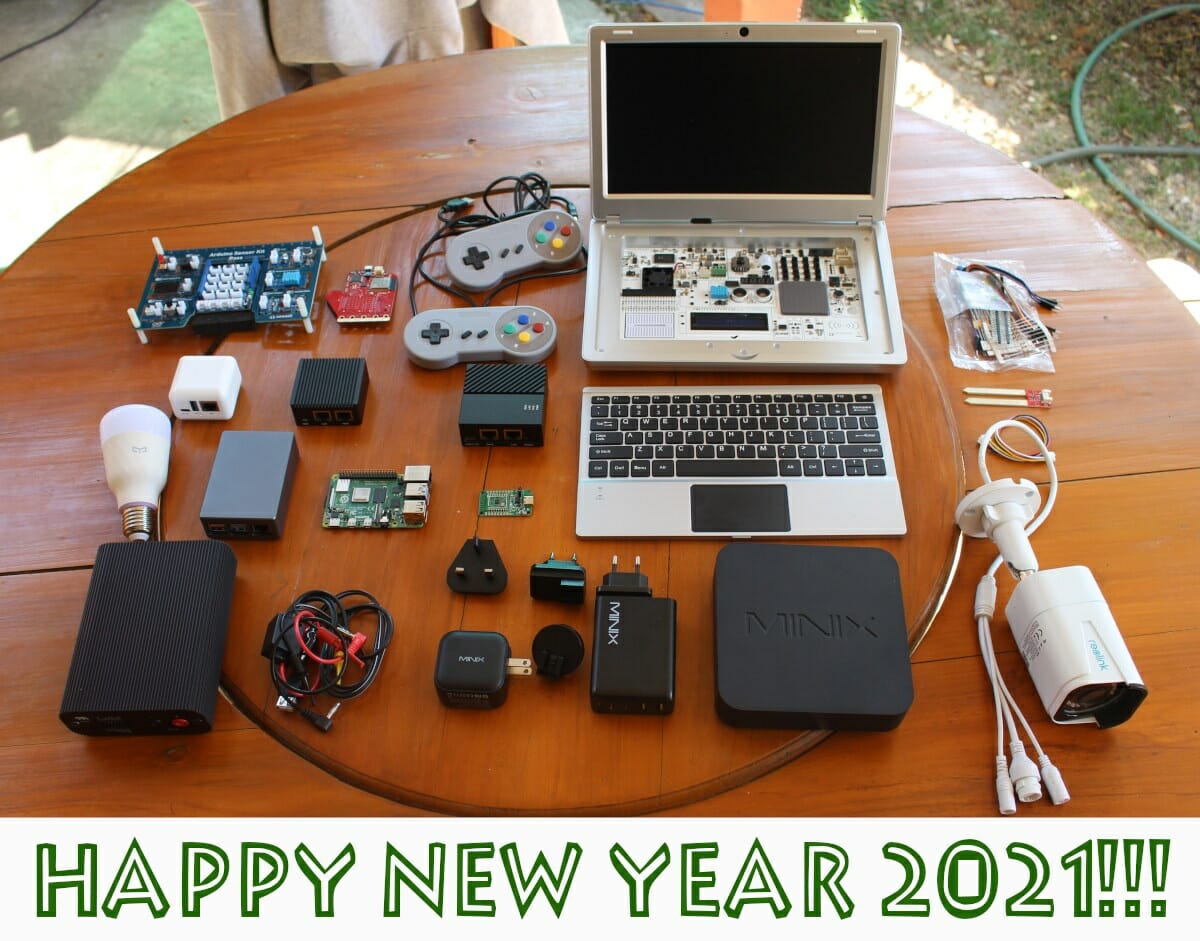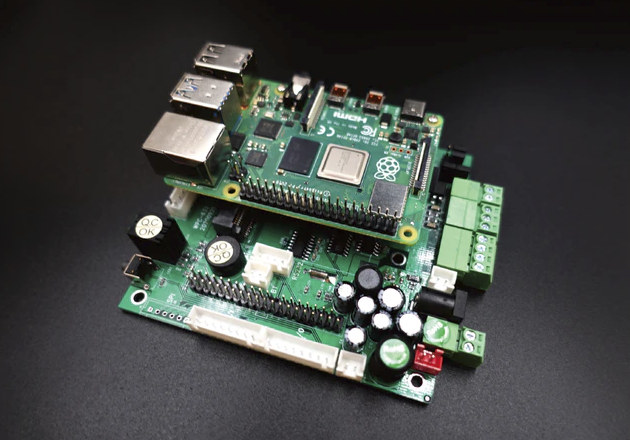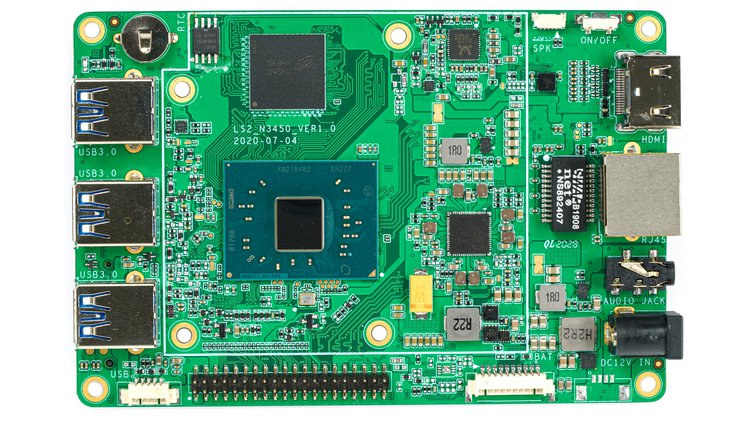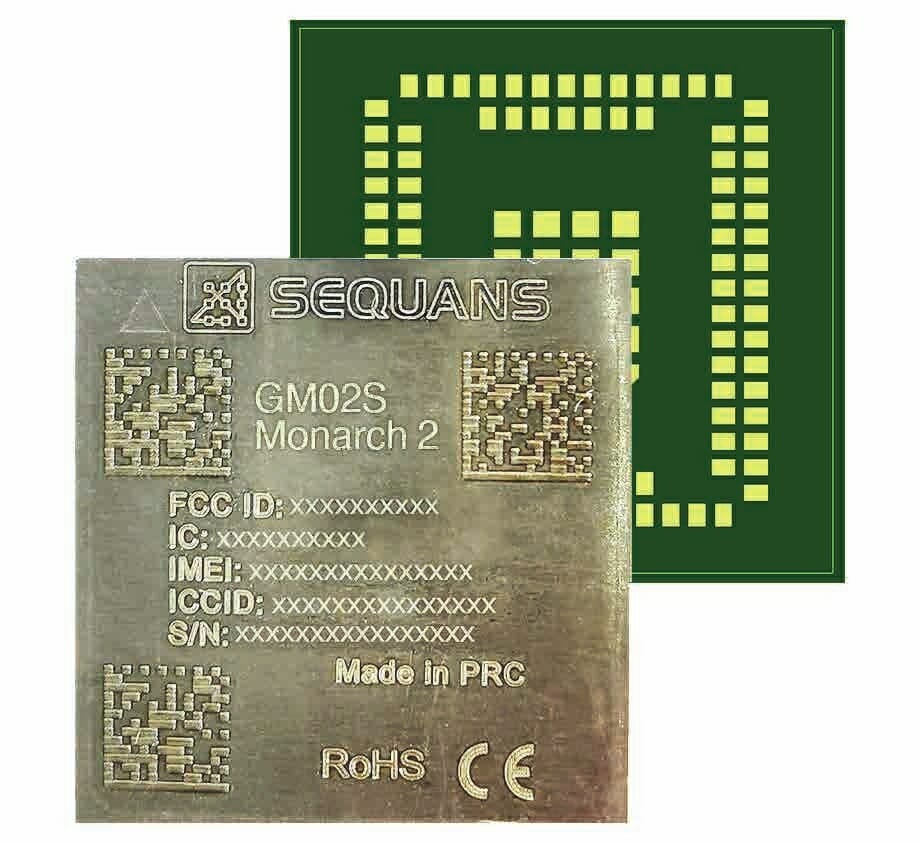Following the introduction of Qualcomm Snapdragon 888 5G premium processor last December, Samsung has now unveiled the Exynos 2100 5G mobile SoC with many of the same features and specifications. The new 5G processor notable features a similar eight-core design with one Cortex-X1 core, three Cortex-A78 cores, and four low-power Cortex-A55 cores, 26 TOPS of AI computing, support for 4K UHD displays, as well as a 5G modem built into the chip. Samsung Exynos 2100 key features and specifications: SoC – Octa-core processor with Single-core Cortex-X1 @ up to 2.9GHz Triple-core Cortex-A78 @ up to 2.8GHz Quad-core Cortex-A55 @ up to 2.2GHz GPU – Mali-G78 MP14 AI Accelerator – 26 TOPS triple NPU Memory – LPDDR5 (51.2GB/s) Storage – UFS 3.1 Display – 4K/WQUXGA @ 120Hz max, QHD+ @ 144Hz max; HDR10+ support Cellular Modem 5G NR Sub-6GHz 5.1Gbps (DL) /1.92 Gbps (UL) 5G NR mmWave 7.35Gbps (DL) /3.67 Gbps […]
Calliope 2 – An LTE Cat-1 IoT platform with VoLTE support
We have already seen Sequans’ Low Power LTE-M/NB-IoT Module – the Monarch 2. Sequans, popular for its product portfolio based on Monarch LTE-M/NB-IoT and Calliope Cat 1 chip platforms, has continued to release more products with the latest announcement of the Calliope 2 LTE Cat-1 Platform (Chip). This solution is designed for IoT applications that require a higher data rate of more than 100 kilobits per second. One of the key elements of the IoT industry is to choose a network connection that is cost-efficient and provides excellent coverage along with global coverage that enables roaming and voice over LTE (VoLTE) made possible with Cat 1. Why having audio and voice for IoT applications you may ask? That’s mostly useful in machine-to-human and human-to-machine communications such as command, control, and alerts. “Calliope 2 complements our Monarch 2 LTE-M/NB-IoT product family and makes Sequans a one-stop-shop for virtually all IoT applications—ranging […]
5G coming to entry-level devices with Snapdragon 480 5G SoC
5G rollout really only started ramping in 2019, and we covered premium 5G mobile SoC like Qualcomm Snapdragon 855, Huawei Kirin 990 or Samsung Exynos 980, as soon as December 2018. In late 2019 and 2020, 5G came to mid-range mobile devices thanks to chips such as Snapdragon 765(G), MediaTek Dimensity 720, UNISOC T7520, and others. Somehow, 5G still felt premium to me since the technology is still relatively, so I was surprised by the level of coverage in Europe and the US, and even smaller countries like Thailand, when I looked at the 5G coverage map above after seeing an announcement for Snapdragon 480 processor designed for entry-level 5G smartphones. Qualcomm Snapdragon 480 (SM4350) key features and specifications: CPU – Octa-core Kryo 460 processor with two Cortex-A76 class cores @ 2.0 GHz, six Cortex-A55 cores @ 1.8 GHz GPU – Adreno 619 GPU with H.264 (AVC), H.265 (HEVC) VP8 […]
Year 2020 in review – Top ten posts and stats
It’s this time of the year when we look back at what happened, and what may be next. 2020 did not pan out as planned in more ways than one, but there were still some interesting developments. Based on 2019 announcements, 2020 was promising to be an exciting year for Amlogic and Rockchip with the expected launch of RK3588 and S908X high-end processors for 8K capable devices, but we’ll have to wait for 2021 for this to happen. Instead, the most interesting processor of the year from the Allwinner, Amlogic, and Rockchip offerings was probably Amlogic S905X4 processing adding AV1 hardware decoding. As pointed out in our “RISC-V 2020 highlights” post, it was a fairly eventful year for RISC-V architecture, although there’s still a long road ahead, especially for application processors. We had seen some general-purpose and Bluetooth RISC-V MCUs in 2019, but 2020 saw the launch of the first […]
Industrial 5G/4G Base Shield supports Raspberry Pi, Jetson Nano, other SBC’s (Crowdfunding)
Akari, a start-up based in Japan, has designed an industrial base shield for Raspberry Pi 4/3/Zero, Jetson Nano, Rock Pi 4, and other compatible single board computers. The board allows users to create industrial gateways integrating wireless modules (5G, 4G LTE, WiFi 6 and/or LoRa), a neural compute stick, relay module, and digital inputs, RS232/RS422/RS485, and more. Industrial 4G/5G Base Shield specifications: Compatible SBCs – Raspberry Pi 4, Raspberry Pi 3, Raspberry Pi Zero, Jetson Nano, Rock Pi 4, UP Board, and probably other SBCs with a similar form factor I/Os Build-in relay module and digital input (also reserve dry contacts and wet contacts) Digital input / digital output RS232, RS485, RS422 Internal headers USB host port for connection with Raspberry Pi Expansion M.2 socket for 5G Mini PCIe socket for 4G LTE, WiFI6, or LoRa SIM card socket Internal bay for Intel Neural Compute Stick Misc – RTC module […]
Hackboard 2 Intel Celeron N4020 SBC comes with optional 4G/5G cellular modem (crowdfunding)
We’ve seen several x86 SBCs made for the makers’ community including AAEON Up Board family, AMD powered UDOO BOLT boards, and Seeed Studio Odyssey-X864105 SBC and mini PC. Hackboard 2 is another one of those single board computers. Powered by a dual-core Intel Celeron N4020 Gemini Lake Refresh processor coupled with 4GB DDR4 RAM and 64GB eMMC flash, the board offers the usual HDMI, Ethernet, USB ports, plus a 40-pin Raspberry Pi header, and an optional 4G or 5G modem. Hackboard 2 specifications: SoC – Intel Celeron N4020 dual-core Gemini Lake Refresh processor @ 1.1 GHz / 2.8 GHz (Turbo) with 4MB cache, Intel UHD graphics 600; 6W TDP System Memory – 4GB DDR4 RAM Storage – 64 GB onboard eMMC flash, 2x NVMe M.2 slots for up to 4 TB additional storage Video output HDMI 2.0a output up to 4K 30-pin eDP connector for 11.6″ to 15.6″ displays 6-pin […]
What is Federated Learning in 5G C-V2X?
In the past, Bluetooth, Wi-Fi, 3G, 4G with onboard sensors and GPS gave a huge start to the partial or conditional automation of the vehicles. In today’s era of 4G/5G C-V2X (Cellular vehicle-to-everything) with onboard compute and sensors have pushed the connectivity evolution in the automotive industry. Work has increased on high-automation and fully autonomous vehicles. This is all possible due to wireless communication which is 5G. 5G brings high bandwidth, ultra-low latency, and high reliability to the board. With these promises, it becomes very evident that these technologies, specifically with 5G that can be leveraged in vehicles. The technology is not just to connect vehicles, but also tries to see if a vehicle can connect to a network to get some information from the cloud servers. For the use case of vehicles platooning, we can expect a latency of 10 ms with 99.99% reliability and a high data rate […]
Sequans Monarch 2 GM02S LTE IoT module is “5G-ready” for “Massive IoT”
A couple of days ago, Sequans published a press release announcing the availability of Monarch 2 GM02S “5G-ready” LTE-M/NB-IoT module with power consumption further reduced by 60 percent, featuring an GSMA-compliant integrated SIM (ieUICC), and designed for “Massive IoT” applications. Wait… What is “Massive IoT”? Ericsson explains: Massive IoT refers to applications that are less latency sensitive and have relatively low throughput requirements, but require a huge volume of low-cost, low-energy consumption devices on a network with excellent coverage. The growing popularity of IoT use cases in domains that rely on connectivity spanning large areas, and are able to handle a huge number of connections, is driving the demand for massive IoT technologies. I see… That’s what I used to call LPWAN (Low-power wide-area network) applications, but for sure “Massive IoT” sounds much more cool. Monarch 2 GM02S Let’s go back to the module with Sequans Monarch 2 GM02S key […]


